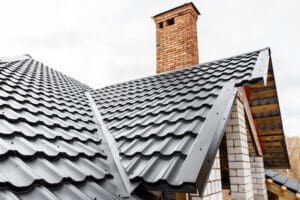
The Pros and Cons of Metal Roofing Material
The roof over your head is more than just a structural necessity; it’s a long-term investment that has a direct impact on your home’s energy efficiency, durability, and aesthetics. In recent years, metal roofing has gained considerable traction, moving from industrial buildings to residential homes. But is a metal roof the right choice for you? This comprehensive guide delves into the pros and cons of metal roofing material, arming you with the information you need to make an educated decision.
COMPARE QUOTESThe Pros of Metal Roofing
1. Longevity
One of the most attractive aspects of metal roofing is its lifespan. With proper installation and maintenance, a metal roof can last upwards of 40 to 70 years, depending on the material. This longevity dwarfs the typical lifespan of asphalt shingles, which usually need replacing every 20 to 25 years.
2. Energy Efficiency
Metal roofs reflect solar heat, reducing cooling costs during hot seasons. Some metal roofing materials are also treated with special reflective pigments to improve their energy efficiency, enabling homeowners to save on energy bills year-round.
3. Durability
Metal is incredibly resistant to many elements that wreak havoc on other roofing materials. It can withstand wind gusts up to 140 miles per hour, is less prone to damage from hail, and is also resistant to fire, mildew, rot, and insects.
4. Low Maintenance
Apart from the occasional cleaning or removal of debris, metal roofs require little to no maintenance. There is no need for the frequent repairs or replacements that come with other roofing materials like wood or asphalt.
5. Environmentally Friendly
Metal roofing is often made from recycled materials and is 100% recyclable at the end of its life. This makes it an eco-friendly option for those looking to reduce their carbon footprint.
6. Style Versatility
Modern metal roofing comes in a myriad of styles, colors, and finishes. Whether you’re aiming for a contemporary look or want to maintain a more traditional appearance, there’s a metal roofing option to suit your aesthetic preferences.
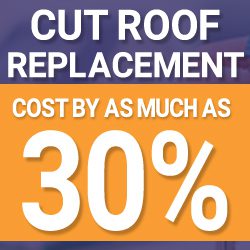
The Cons of Metal Roofing
1. Initial Cost
One of the major deterrents for homeowners considering metal roofing is the initial cost. Metal roofing can be two to three times more expensive upfront compared to asphalt shingles. However, this cost is often offset by the roof’s durability and low maintenance.
2. Noise Factor
Metal roofs can be noisy during heavy rain or hail. While some people enjoy the sound, others find it disruptive. It’s worth noting that additional insulation can dampen the noise, but that comes at an extra cost.
3. Expansion and Contraction
Metal expands and contracts with temperature fluctuations. While modern systems have addressed this with fasteners that allow for movement, cheaper or improperly installed metal roofs can produce a wavy effect, known as “oil canning,” which can be unsightly.
4. Potential for Denting
While metal roofs are incredibly durable, they are not entirely immune to denting. Severe hailstorms or falling branches can leave dents, although some metal options are more resistant than others.
5. Professional Installation
Due to its unique properties and installation techniques, metal roofing generally requires professional installation. Doing it yourself or hiring an inexperienced contractor could lead to issues like leaks, poor insulation, or structural damage.
COMPARE QUOTESMetal roofing offers a slew of advantages, from durability and energy efficiency to low maintenance and environmental sustainability. However, it’s essential to weigh these against the cons like initial cost, noise, and the need for professional installation. Understanding both sides of the coin allows you to assess whether a metal roof aligns with your long-term objectives, aesthetic desires, and budget.
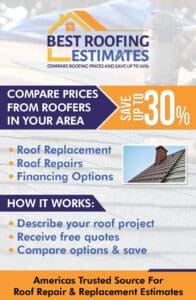
What Type of Environment is Metal Roofing Ideal for?
Metal roofing, while versatile, has distinct advantages in specific environments. As homeowners and property developers consider roofing options, understanding how a roof performs under various environmental conditions can influence the decision. Let’s take a detailed look at the types of weather and environmental factors that make metal roofing a particularly excellent choice.
Sun-Intensive Areas
Metal roofing is highly reflective, making it ideal for areas that receive a lot of sunlight. Unlike asphalt shingles, which can absorb and trap heat, metal roofs reflect the sun’s rays. This feature not only helps to keep homes cooler, reducing the load on air-conditioning systems, but also prevents UV degradation.
Coastal Areas
Metal roofs are particularly well-suited for coastal environments. The salt in the sea air can be corrosive, causing many roofing materials to deteriorate faster. Stainless steel, aluminum, and specially coated metal roofs resist this salt-induced corrosion, making them ideal for homes near the ocean.
Windy Regions
One of metal roofing’s standout features is its resistance to strong winds. In areas that are prone to hurricanes, tornadoes, or just consistently high winds, metal roofing can provide superior protection. The interlocking panels of metal roofing systems offer a higher wind resistance compared to other materials like shingles.
Areas with Heavy Snowfall
Metal roofs are designed in a way that allows snow to slide off easily, preventing the build-up of heavy snow loads. This reduces the risk of roof collapses. Additionally, metal roofing doesn’t absorb water, reducing the chances of leaks or water damage which can be exacerbated by melting snow.
Fire-Prone Areas
For areas that are at risk of wildfires, metal roofing can be a lifesaver. Unlike wood or some other materials, metal is non-combustible. It won’t ignite when hit by hot embers or flames, potentially saving homes from fire disasters.
COMPARE QUOTESTemperate Climates
In regions with fluctuating temperatures, metal roofs can assist in energy regulation. Cool-metal roofing systems can help reflect heat in the summer, keeping homes cooler. Conversely, with proper insulation beneath the metal, homes can stay warm during winters, as the metal traps heat inside.
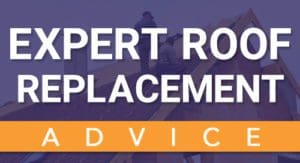
Areas with Varied Precipitation
Whether it’s heavy rainfall, hail, or sleet, metal roofs offer durability and protection. They are virtually impermeable, ensuring that rainwater doesn’t seep through. Their smooth surfaces also help in preventing water stagnation, reducing the risk of leaks or mold growth.
Environmental Considerations
Beyond weather, environmental sustainability is a growing concern. For eco-conscious regions or homeowners looking for green building certifications, metal roofing, often made of recycled materials and being fully recyclable, is a viable choice.
The adaptability of metal roofing to various environments is one of its primary strengths. From the sun-drenched coasts to snowy mountains, from wildfire-prone areas to windy plains, metal roofing offers a protective, energy-efficient, and long-lasting solution. While it’s crucial to consider local weather patterns and environmental factors, metal roofing has proven to be a resilient choice in numerous conditions.
COMPARE QUOTESHow Much Does It Cost to Have a Metal Roof Installed?
When considering a metal roof, one of the primary concerns is invariably the cost. Metal roofing, with its myriad of benefits, does come with a higher initial price tag compared to some traditional roofing materials. To provide a clearer picture, we’ll break down the various factors and the associated costs that come into play when installing a metal roof.
Factors Influencing Metal Roofing Costs
Several elements can influence the total cost of a metal roof:
- Type of Metal: There’s a broad range of metal types, each with its price point. Commonly used metals include steel, aluminum, copper, zinc, and tin.
- Roof Design: A simple gable roof without many cuts or angles will be less expensive than a complex roof with multiple peaks or a mansard design.
- Roof Size: Naturally, the larger the roof, the higher the total cost.
- Roof Complexity: Chimneys, skylights, vents, and other features can add complexity to the installation, increasing costs.
- Labor Rates: Labor costs can vary significantly based on the region, the expertise of the chosen contractor, and the complexity of the job.
- Coatings or Finishes: Special finishes or protective coatings can add to the material cost.
- Removal of Old Roofing: Depending on the condition and type of existing roofing, there might be additional charges for removal and disposal.
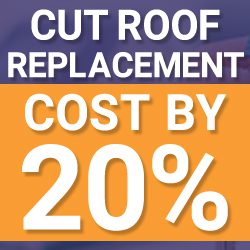
Average Costs
As of my last update in September 2021, here’s a breakdown of average costs for metal roofing:
- Material Costs:
- Steel: Ranges from $5 to $10 per square foot.
- Aluminum: Typically falls between $6 to $12 per square foot.
- Copper & Zinc: These are premium metals and can range from $10 to $20 per square foot.
- Tin: This is less commonly used nowadays, but usually is on the lower end, around $4 to $8 per square foot.
- Installation/Labor:
- Labor costs can add another $3 to $5 per square foot, depending on the region and the complexity of the installation.
- Additional Costs:
- Removing and disposing of old roofing can add an additional $1 to $5 per square foot.
- Underlayment, fasteners, flashing, and other necessary roofing components can add further costs.
Considering these factors, for an average-sized home, you might be looking at a total cost range of $10,000 to $20,000 for a steel or aluminum roof. Premium metals, like copper or zinc, can push these costs higher.
COMPARE QUOTESIs the Investment Worth It?
While the initial cost for a metal roof is higher than some traditional roofing materials, it’s crucial to consider the long-term value. Metal roofs have a considerably longer lifespan, often lasting 40-70 years with minimal maintenance. When you factor in the savings on repairs, replacements, and energy costs over the years, the initial investment often proves cost-effective in the long run.
While the upfront costs of metal roofing can induce some sticker shock, understanding the breakdown helps in assessing the value proposition. When considering a metal roof, it’s beneficial to evaluate the long-term advantages alongside the initial investment. Given its durability, energy efficiency, and minimal maintenance needs, many homeowners find that a metal roof offers significant value over its lifespan.

Metal Roof Maintenance Tips You Can’t Miss
So, you’ve decided to go for a metal roof or maybe you already have one. While metal roofs are lauded for their durability and minimal maintenance requirements, no roofing is truly “set it and forget it.” To ensure the longevity and pristine appearance of your metal roof, you’ll want to follow some maintenance best practices. Here are some metal roof maintenance tips that are indispensable.
1. Regular Inspection
Even with the durability of metal, it’s essential to inspect your roof at least once or twice a year. Look for:
- Signs of corrosion or rust.
- Loose, misaligned, or missing fasteners.
- Debris accumulation.
- Any sealant that looks old or is peeling.
2. Clean Off Debris
Over time, leaves, branches, and other debris can accumulate on your roof. This can lead to water pooling or rust, especially in the crevices of roofing panels. Periodically sweep or hose off any debris. Pay particular attention after storms.
3. Wash Your Roof
A clean roof isn’t just about aesthetics. Dirt, dust, and especially bird droppings can be corrosive over time. Use a gentle cleaning solution and a soft brush or cloth to clean the roof. Rinse thoroughly with water afterward.
4. Check and Clean Gutters
Blocked gutters can cause water to pool and back up onto the roof, leading to potential damage. Regularly inspect your gutters for debris and ensure they’re well-attached and free from damage or sagging.
5. Avoid Walking on the Roof
If possible, try not to walk on your metal roof. If you must, wear soft-soled shoes and walk as gently as possible. Stepping hard can cause dents or misalign the panels.
6. Address Rust Spots
If you notice small rust spots, it’s essential to address them promptly. Clean the area, then apply a primer and quality metal paint to prevent the rust from spreading.
7. Monitor Sealants and Fasteners
Over time, sealants can deteriorate, and fasteners can become loose. If you notice any issues during your inspections, reapply sealant or tighten fasteners as needed.

8. Trim Overhanging Branches
Tree branches that hang over your roof can scrape against the metal during strong winds, causing damage or leading to debris accumulation. Regularly trim branches to keep a clear space above your roof.
9. Be Mindful of Snow and Ice
In areas with snow, be cautious of ice dams or heavy snow accumulation. While metal roofs are excellent at shedding snow, ice dams can still form at the edges. Use a roof rake to gently remove snow, ensuring you don’t scratch the metal.
10. Consult a Professional
If you’re unsure about any aspect of your metal roof maintenance or if you identify potential issues, it’s always a good idea to consult a professional. They can provide expert guidance, ensuring the longevity and performance of your roof.
COMPARE QUOTESA metal roof is a significant investment, and with proper care, it can last for decades, offering unmatched protection and aesthetics. By adhering to these maintenance tips, homeowners can ensure they get the maximum value from their metal roof, preserving its beauty and functionality throughout its lifespan.
Top 10 Roofing Companies for Metal Roofing
Metal roofing has gained immense popularity over the years due to its durability, energy efficiency, and aesthetics. With a rising demand for metal roofing, a slew of companies has emerged, specializing in its installation and maintenance. If you’re considering getting a metal roof, choosing the right company is crucial. Below is a list of some of the most reputable companies:
1. Interlock Roofing
- Headquartered in: Delta, British Columbia, Canada
- Highlights: One of the largest metal roofing manufacturers in North America, they offer a variety of styles and finishes.
2. Drexel Metals Inc.
- Headquartered in: Louisville, KY
- Highlights: With a robust environmental initiative, they produce energy-efficient and recyclable metal roofing.
3. Berridge Manufacturing Co.
- Headquartered in: San Antonio, TX
- Highlights: Pioneers in the industry, they offer a wide range of metal roofing products and have a reputation for quality.
4. Classic Metal Roofing Systems
- Headquartered in: Piqua, OH
- Highlights: Known for their high-quality aluminum roofing systems, they come with impressive warranties.
5. CentiMark Corporation
- Headquartered in: Canonsburg, PA
- Highlights: While they offer a broad range of roofing solutions, their expertise in metal roofing is notable. They focus on longevity and sustainability.

6. Englert Inc.
- Headquartered in: Perth Amboy, NJ
- Highlights: With over 50 years in the business, they offer a broad range of metal roofing systems and are recognized for their technological innovation.
7. Metal Sales Manufacturing Corporation
- Headquartered in: Louisville, KY
- Highlights: Offering a wide variety of panel designs and colors, they are known for their commitment to sustainability and innovation.
8. Sheffield Metals International
- Headquartered in: Sheffield Village, OH
- Highlights: They provide a range of metal roofing materials, tools, and accessories. Their focus on education and training sets them apart.
9. Bridger Steel
- Headquartered in: Bozeman, MT
- Highlights: Specializing in high-quality metal panels, they are known for their unique finishes and colors.
10. Fabral
- Headquartered in: Lancaster, PA
- Highlights: With a broad range of metal roofing options, they have solutions for both residential and commercial projects.
When it comes to metal roofing, choosing a company that offers both expertise and quality products is paramount. These companies have established reputations in the industry and are known for their commitment to excellence. However, remember that local contractors can also offer quality services, so it’s essential to read reviews, ask for references, and obtain multiple quotes to make an informed decision.
The Environmental Benefits of Metal Roofs
While metal roofing offers distinct advantages in terms of durability and aesthetics, it’s equally crucial to spotlight the environmental benefits that these roofs bring. As we face increasing global environmental challenges, the construction industry is seeking greener solutions, and metal roofs are rising to the occasion. Here’s how:
Longevity Reduces Waste
One of the significant environmental benefits of metal roofs is their lifespan. With a metal roof lasting anywhere from 40 to 70 years, compared to the average 12-20 years of asphalt shingles, the reduced frequency of replacements means less waste ending up in landfills.
Energy Efficiency
Metal roofs can reflect solar radiant heat, which can reduce cooling costs by 10% to 25%. This reflective property helps homeowners save on energy bills, especially during the hot summer months, reducing the strain on the power grid and decreasing greenhouse gas emissions.

Recyclability
At the end of its long life, a metal roof is 100% recyclable. In contrast, many other roofing materials, especially asphalt shingles, contribute to the millions of tons of waste that goes to landfills annually. Furthermore, many metal roofs contain a significant portion of recycled content to begin with, creating a cycle of reuse that’s highly sustainable.
Rainwater Harvesting
The smooth, durable surface of metal roofs makes them ideal for rainwater harvesting systems. Collected rainwater—after appropriate treatment—can be used for a multitude of purposes, reducing the demand on local water supplies.
Reducing Urban Heat Islands
Urban areas often suffer from higher temperatures due to the concentration of buildings, roads, and other infrastructures absorbing and re-emitting the sun’s heat. This phenomenon is known as the Urban Heat Island effect. Metal roofs, especially those with light or reflective colors, help mitigate this effect by reflecting more of the sun’s rays than they absorb.
Compatibility with Solar Panels
As the world moves towards renewable energy sources, solar panels are becoming an increasingly common sight on rooftops. Metal roofs are particularly well-suited to solar panel installations. Their durability ensures that the roof will likely outlive the solar panels, reducing the need for roof replacements that can disrupt solar installations.
Low Maintenance Impact
Unlike some roofing materials that may require treatments to maintain their integrity or appearance, metal roofing requires very minimal upkeep. This reduces the environmental impact of maintenance-related products and services over the roof’s life.
COMPARE QUOTESIn an age where sustainability and eco-friendliness are not just buzzwords but necessities, metal roofs stand out as an excellent choice for those looking to make environmentally conscious decisions without compromising on quality or aesthetics. By understanding and harnessing the green benefits of metal roofing, homeowners, builders, and architects can contribute positively to a more sustainable future.

Embracing the Versatility of Metal Roofing Designs
One common misconception about metal roofs is that they lack variety in design. However, with the advancement in technology and the growing demand for metal roofing, there has been a significant evolution in its design options. Let’s delve into the plethora of design choices available, showing that metal roofing can be as aesthetic as it is functional.
Varied Profiles and Textures
Metal roofs are not limited to the classic vertical seam profile. They come in a plethora of styles, from interlocking shingles, shakes, tiles, and even slate designs. The variety in profiles ensures that homeowners can find a design that complements the architectural style of their homes, whether it’s contemporary, colonial, or rustic.
Extensive Color Options
Gone are the days when metal roofs were only available in basic colors. Today, homeowners can choose from a vast palette, ranging from earth tones, blues, reds, and even specialty colors that can mimic patina and weathered steel. The use of cool roof pigments allows these roofs to reflect more of the sun’s infrared radiation, combining aesthetics with energy efficiency.
Standing Seam Variations
The standing seam metal roof, with its raised interlocking seams, is a popular choice among modern and traditional homes alike. These seams come in various widths, allowing for a more customized appearance. Moreover, homeowners can choose concealed or exposed fasteners based on their design preference.
Decorative Elements and Accents
Some metal roofing systems offer decorative trim, ridge caps, and other accents to enhance the roof’s overall look. These can be matched to the primary roof color or in contrasting shades for added visual interest.
COMPARE QUOTESMix and Match Materials
For homeowners looking to make a unique design statement, combining metal roofing with other materials, such as cedar shakes or slate tiles, can produce a distinctive look. This blending of materials can be used to highlight certain architectural features of a home.

Integrated Roofing Systems
With the growing demand for sustainable energy, metal roofs are increasingly being designed to integrate seamlessly with solar panels, green roofs, and even rainwater harvesting systems. This allows homeowners to achieve a cohesive look while benefiting from multiple eco-friendly features.
Customizable Finishes
Metal roofs can be finished to achieve different effects. While some might opt for a glossy finish, others might prefer a matte look or even a textured finish for added dimension. Some advanced coatings can also provide anti-reflective, anti-microbial, or even self-cleaning properties.
The versatility of metal roofing designs ensures that homeowners don’t have to compromise aesthetics for durability and sustainability. By embracing the myriad of design options available today, homeowners can have a roof that not only protects their home but also elevates its visual appeal. As you consider metal roofing for your next project, remember that the sky’s the limit when it comes to design possibilities!
COMPARE QUOTES


Leave a Reply